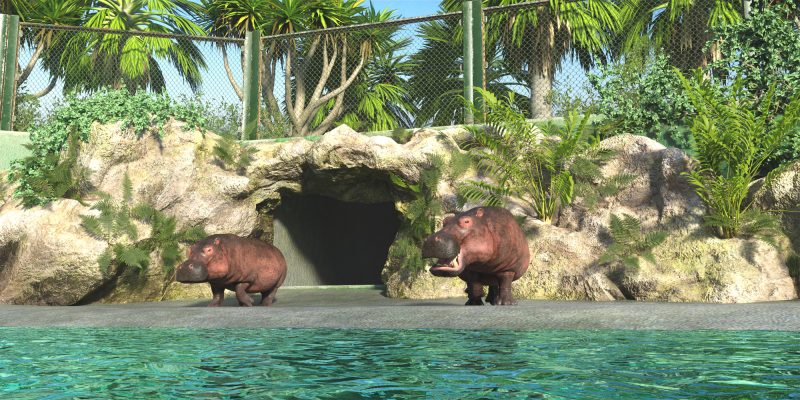So one of the cool aspects of working as a 3D model maker is the variety of subject matter that I get to realise digitally. Following on from my ever-popular LoREZ series is this brand-new LoREZ Hippo.
A hippopotamus, scientifically known as Hippopotamus amphibius, is a large semi-aquatic mammal native to sub-Saharan Africa. It is one of the largest land mammals and is known for its massive size, stocky build, and unique appearance.
Size and Physical Characteristics:
A hippopotamus is a massive animal with a barrel-shaped body, short legs, and a large head. It can grow to be about 13 to 15 feet (4 to 4.5 meters) long and can stand about 5 feet (1.5 meters) tall at the shoulder. They can weigh between 1,500 to 4,000 kilograms (3,300 to 8,800 pounds), with males being slightly larger than females. Their bodies are covered in thick, hairless, and virtually skin-tight skin that ranges in colour from greyish-brown to purplish-grey.
Head and Mouth:
The hippo’s head is massive and broad, with a wide mouth that reveals large, sharp incisors and canine teeth. The incisors and canines can grow up to 51 centimetres (20 inches) long in males and are used for territorial fights and defence. Their eyes and nostrils are positioned high on the head, allowing them to see and breathe while mostly submerged in water.
Ears and Eyes:
On the top of the hippo’s head are small ears that close underwater to prevent water from entering. Their eyes are located on the sides of the head, allowing them to have a wide field of vision and see predators or threats easily.
Legs and Feet:
Hippopotamuses have short and stout legs with four toes on each foot. Their feet are broad and have thick, protective pads, making them well-suited for traversing through muddy terrain and walking on the riverbeds. Despite their size and weight, hippos are surprisingly agile and can move swiftly both on land and in water.
Habitat and Behavior:
Hippos are primarily found in rivers, lakes, and swamps throughout sub-Saharan Africa. They are highly adapted to an aquatic lifestyle and spend the majority of their time in the water to keep cool and protect their sensitive skin from the sun. However, they also venture onto land to graze on grass and other vegetation during the night.
Hippos are known for their territorial and aggressive nature. They mark their territories by spraying faeces with their tails and have been observed engaging in territorial disputes and fierce battles, especially among males. Despite their aggressive reputation, they are herbivorous and mainly feed on grasses, grazing for several hours during the night.
Social Structure:
Hippos are social animals and live in groups known as pods or bloats. A typical pod consists of around 10 to 30 individuals, led by a dominant male. Females, their offspring, and some subordinate males make up the rest of the group. They communicate through various vocalizations, such as grunts, roars, and honks, and maintain social hierarchies within their groups.
In conclusion
A hippopotamus is a large and imposing mammal with a distinct appearance. Its massive size, barrel-shaped body, large head, and short legs make it easily recognizable. While they are known for their territorial behaviour, they are also fascinating creatures that have adapted to a semi-aquatic lifestyle, spending much of their time in water and grazing on land during the night.
For more about the 3D model of this LoREZ Hippo please follow the link here to go to the store page. A bundle is available that includes the LoREZ Hippo and Zoo Pool, as seen in some of the previous images.















